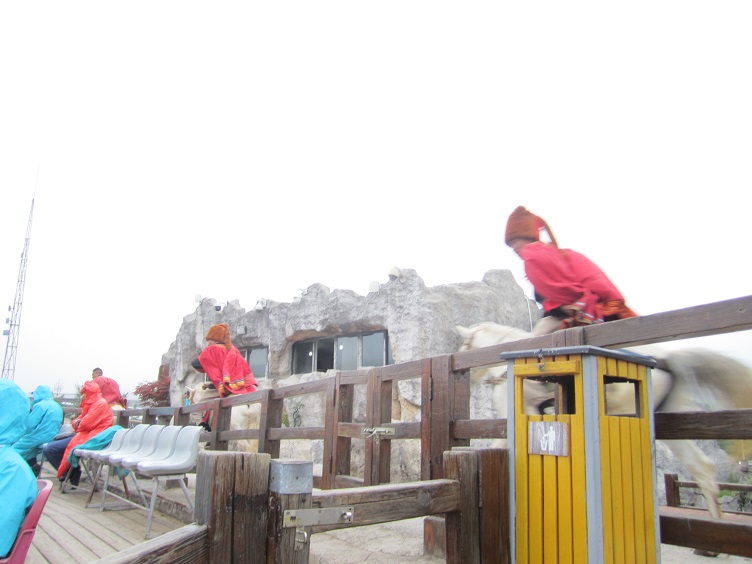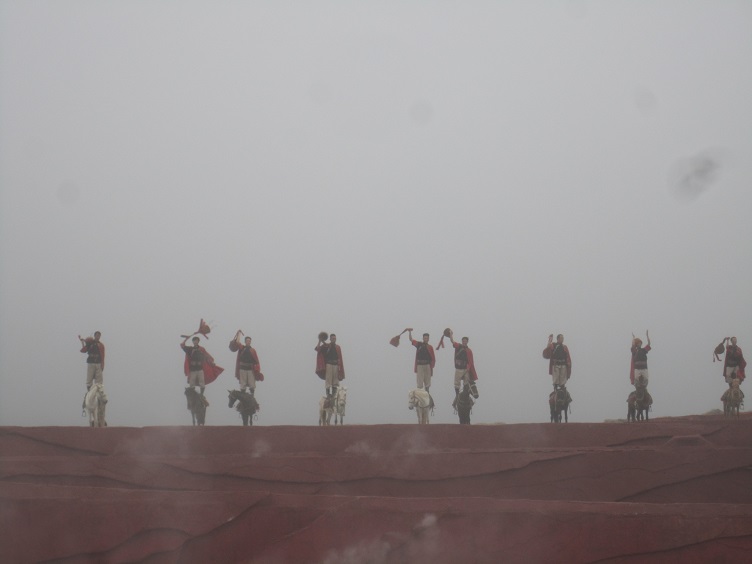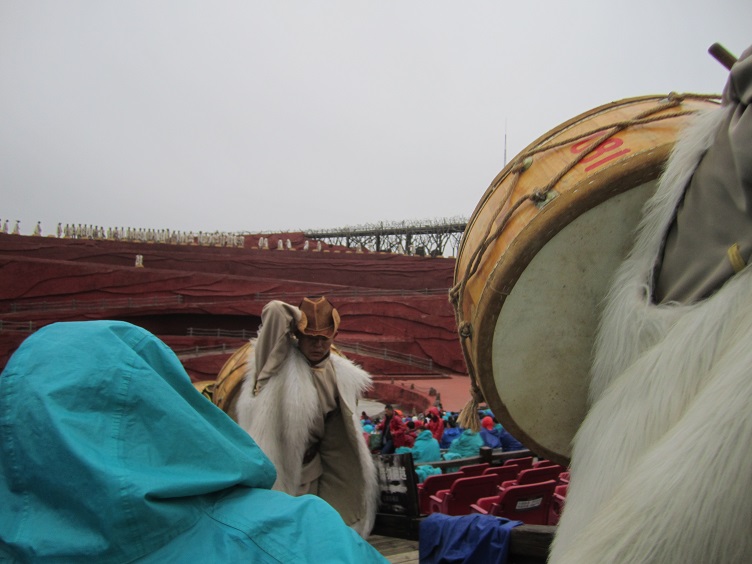My summer vacation this year took me back to China. Unfortunately, I didn’t get to meet with China arts administrators on this trip, though I did try to secure some introductions and arrangements.
One arts related thing that struck me this time was the Impressions: Lijiang performance I attended. The show is directed by Zhang Yimou (Raise The Red Lantern, Hero, 2008 Olympics Opening and Closing Ceremonies) and was the second of seven shows he and his collaborators created for scenic places around China. The show in Lijiang is performed in full daylight in a 2000 seat open amphitheater on Jade Dragon Snow Mountain near Lijiang.
There are about 500 performers and 100 horses in the show. As you will see from some of the pictures below, some of the performance happens in the aisles and the horses gallop around the entire rim of the amphitheater.
The interesting thing about this production is that all the performers have been cast from the local farmers, representing about 10 different ethnic minorities that live in the region, (including the Muoso, one of the few matrilineal societies in the world). So the cast is telling the story of their people who have lived there for generations. Historically, the people of Lijiang and Yunnan province in which the city is located have participated in the Ancient Horse-Tea Road trading route, thus the significant presence of horses in the show.
As far as I have been able to tell from what I can find in promotional content about the other six “Impressions” productions, it appears this show may be the only one that is performed by “amateurs.” I put the term in quotes because that is how many information sources about the show refer to them.
However, because everyone kept mentioning they were farmers, I asked if the show needed to be scaled back or cancelled during harvest and planting time to allow the performers to return home to help their families. I was told performing was their full time job now and was assured they were making better money than if they were still living on the farm. As best I can tell the amateur term is likely a translation of the idea the performers haven’t received formal training rather than a reference to lack of skill or salary.
I wondered if the casting of farmers was intentional in order to help stimulate the economy by increasing the income of residents or was a practical matter due to the difficulty of finding 500+ trained performers in southwestern China, (though they likely didn’t need to be trained to handle and ride horses), or a combination of both. Given the way things operate in China, all the shows in the Impressions series were likely instigated by, and receive significant support from, the government. As much as I would love to use this as an example of government support for minority cultures, it wasn’t all that long ago that official policy was to suppress the cultural practices of these same ethnic minorities.
As you may have surmised from my pictures, it was raining the day we saw the show so the spectacular majesty of Jade Dragon Snow Mountain in the background is not apparent. Check out the video below which was taken during better weather.






Thanks for what you are doing to bring cultural change to the arts. It is so important to represent everyone.…